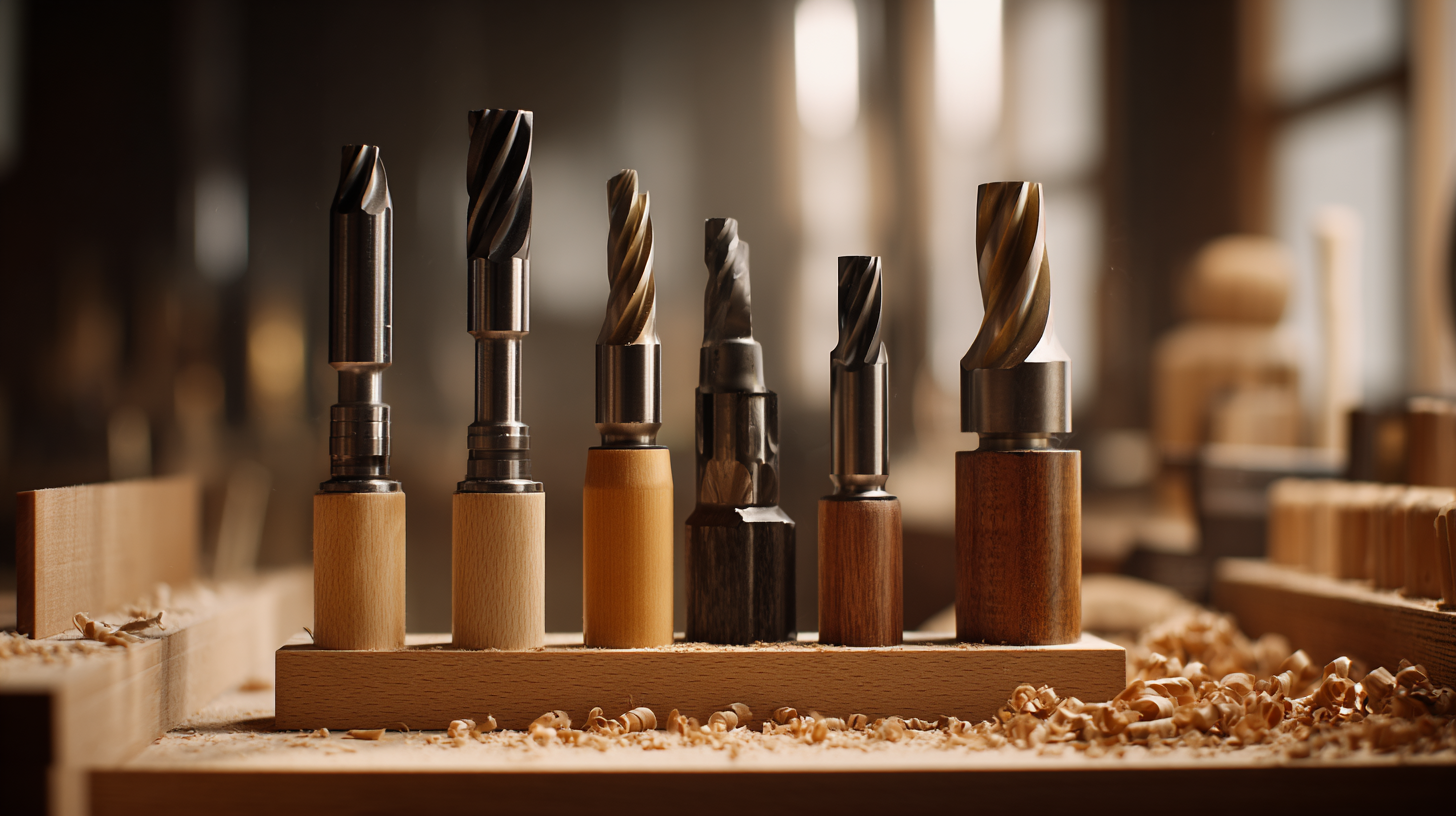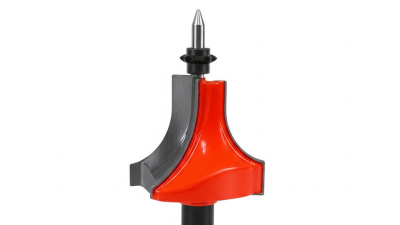SUNDI TOOLS
- Copyright © Wuxi Sundi Precision Tools Co.,LTD All rights reserved.
- Site Map
In the world of woodworking, the versatility of Router Bits is paramount to achieving precision and creativity in various projects. According to industry reports, the global market for woodworking tools, including router bits, is projected to reach USD 10.5 billion by 2024, reflecting a growing demand among both professional artisans and hobbyists.
 Router Bits serve as essential components, offering an extensive range of profiles and designs that allow users to create intricate edges, grooves, and joinery with ease. The ability to tailor Router Bits to specific tasks not only enhances the aesthetic appeal of woodworking projects but also significantly boosts efficiency.
With a plethora of options available, understanding the functionality and application of different Router Bits can empower woodworkers to elevate their craftsmanship and tackle diverse tasks, ultimately driving the growth of the woodworking sector.
Router Bits serve as essential components, offering an extensive range of profiles and designs that allow users to create intricate edges, grooves, and joinery with ease. The ability to tailor Router Bits to specific tasks not only enhances the aesthetic appeal of woodworking projects but also significantly boosts efficiency.
With a plethora of options available, understanding the functionality and application of different Router Bits can empower woodworkers to elevate their craftsmanship and tackle diverse tasks, ultimately driving the growth of the woodworking sector.
Router bits are vital tools in woodworking, allowing craftsmen to shape, mold, and finish wooden pieces with precision. One of the essential types of router bits is the straight bit, which is ideal for simple edge trimming and grooving tasks. This versatile bit comes in various diameters, making it suitable for both large-scale projects and intricate designs.
Another critical type is the flush trim bit, which is designed to cut edges flush with a surface, ensuring a seamless finish. It is particularly useful for templates and trimming laminates.
For decorative purposes, ogee bits and round-over bits are indispensable in any woodworker’s toolkit. Ogee bits create a traditional, styled edge with a distinctive S-shaped profile, making them perfect for enhancing cabinetry and furniture pieces. Round-over bits, on the other hand, soften edges by rounding them off, providing a more polished look while also reducing the risk of chipping.
With a variety of shapes and sizes available, each router bit type brings unique capabilities to woodworking projects, allowing for endless creativity and functionality.
When selecting router bits for your woodworking projects, understanding the five key factors can significantly enhance your results. First, the material of the router bit plays a crucial role in performance. Carbide-tipped bits are known for their durability and extended lifespan, as they can withstand higher temperatures and abrasions compared to high-speed steel (HSS) bits. According to the Woodworkers Association, using carbide-tipped bits can increase productivity by up to 50% due to fewer replacements needed.
Another essential factor is the type of cut you intend to make. For example, straight bits are best for making grooves, while bowl bits are ideal for creating rounded edges. Choosing the correct shape will optimize your efficiency and ensure precision in your cuts.
Tip: Always keep your bits sharp; dull router bits not only produce inferior cuts but can also lead to increased tool wear and burning of the wood. Regularly inspecting and honing your bits will maintain their performance.
Finally, consider the shank size and compatibility with your router. Standard shank sizes, including 1/4 inch and 1/2 inch, offer versatility but ensure that your router can accept the shank you choose. Proper alignment helps prevent kickback, enhancing safety during operation.
Tip: For beginners, start with a set of basic bits that covers a variety of profiles; this will allow you to explore different techniques without overwhelming your setup.
Maintaining and sharpening router bits are essential practices for achieving optimal performance in woodworking projects. To ensure longevity and efficiency, it’s important to clean bits after every use. Wood resin and dust can accumulate, impacting the quality of cuts. A simple solution is to soak the bits in a mixture of warm water and vinegar, followed by a gentle scrub with a soft brush to remove debris without damaging the cutting edges.
Regular sharpening is another key aspect. Dull router bits can lead to tear-out and splintering, which diminishes the quality of your work. For this, a diamond file or specialized sharpening tool is recommended. When sharpening, it's crucial to maintain the original angle of the bit to ensure a precise edge. Additionally, investing in a professional sharpening service every few months can prolong the life of your bits significantly. By incorporating these maintenance practices, woodworkers can enhance performance and achieve cleaner, more accurate results in their projects.

When working with router bits, safety and efficiency are paramount. According to a report by the American Woodworking Association, nearly 30% of woodworking accidents are related to improper tool handling, making it crucial to adopt safe practices. Always ensure that your router is securely mounted and that you are using the correct bit for your project. Wearing personal protective equipment, such as safety goggles and hearing protection, can significantly mitigate risks associated with dust and noise, which are highlighted as common hazards in woodworking environments.
To use router bits effectively, it’s important to understand their design and function. A study by the National Association of Home Builders emphasizes that the right choice of bit can influence both the quality of the cut and the speed of your work. For instance, straight bits are ideal for hollowing out areas and making grooves, while decorative bits add aesthetic appeal to edges. Moreover, taking time to set the appropriate speed, as recommended by the manufacturers, is essential; running your router too fast can burn the wood or damage the bit. Employing these safety measures and best practices not only enhances the outcome of your woodworking projects but also fosters a safer working environment.
 Router bits, often recognized for their primary function of shaping edges and grooves, can surprisingly facilitate a variety of creative applications in woodworking projects. According to a report by the Woodworking Machinery Manufacturers of America (WMMA), the global router bit market is projected to grow by 5.4% annually, indicating an increasing recognition of their versatility among craftsmen. Beyond their traditional use, routers are being employed in applications such as creating intricate inlays and decorative patterns, showcasing their ability not only to enhance structural integrity but also to elevate aesthetic appeal.
Router bits, often recognized for their primary function of shaping edges and grooves, can surprisingly facilitate a variety of creative applications in woodworking projects. According to a report by the Woodworking Machinery Manufacturers of America (WMMA), the global router bit market is projected to grow by 5.4% annually, indicating an increasing recognition of their versatility among craftsmen. Beyond their traditional use, routers are being employed in applications such as creating intricate inlays and decorative patterns, showcasing their ability not only to enhance structural integrity but also to elevate aesthetic appeal.
Furthermore, router bits can be adapted creatively for tasks like hollowing out wood to create unique, customized pieces. A survey from the Association of Woodworking and Furnishings Suppliers (AWFS) highlights that over 70% of woodworkers have integrated router bits in projects for artistic purposes, ranging from furniture making to complex sculptures. This versatility allows artisans to explore new design dimensions, transforming ordinary designs into standout pieces that resonate with individuality and creativity.





